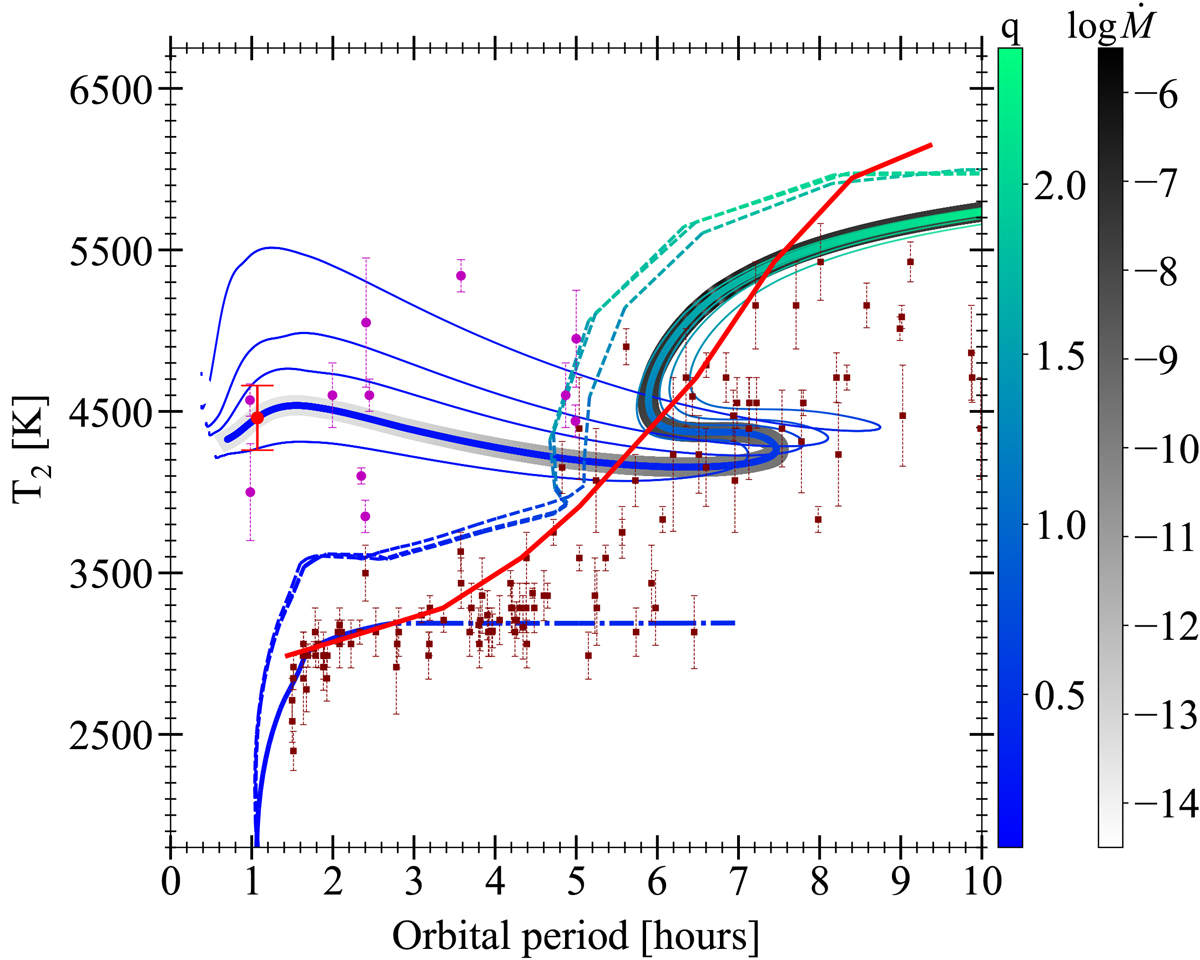Fig. 17.

Download original image
Evolution tracks of EI Psc. The red circle marks EI Psc position. The violet circles denote known systems with warm donors for orbital periods ≲5 hours (see Table 6). The brown squares present the effective temperatures of the donors of CVs plotted vs. their orbital periods (an update of the Beuermann et al. 1998 list). The solid red line corresponds to a relationship that assumes that the secondaries follow the empirical mass-radius relation for main-sequence stars based on Eq. (2.87) from Warner (1995). The solid tracks show the evolutions of systems that form warm secondaries. The wider track corresponds to the evolution of EI Psc system. The dashed tracks plot some of the systems with massive WDs that demonstrate close to standard CV evolution leading to CVs period minimum and forming of period bouncers. The dash-point track shows an example of a conservative mass transfer evolution of a cataclysmic variable with 0.7 M⊙ WD mass and the low mass of the secondary of 0.5 M⊙. The mass transfer rate Ṁ is given in M⊙ year−1 unit. See details in the text.
Current usage metrics show cumulative count of Article Views (full-text article views including HTML views, PDF and ePub downloads, according to the available data) and Abstracts Views on Vision4Press platform.
Data correspond to usage on the plateform after 2015. The current usage metrics is available 48-96 hours after online publication and is updated daily on week days.
Initial download of the metrics may take a while.


